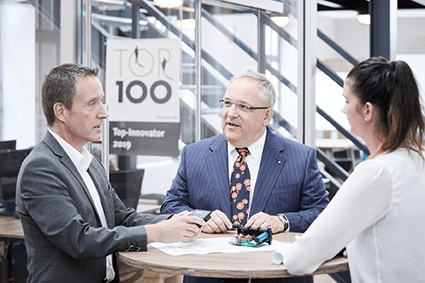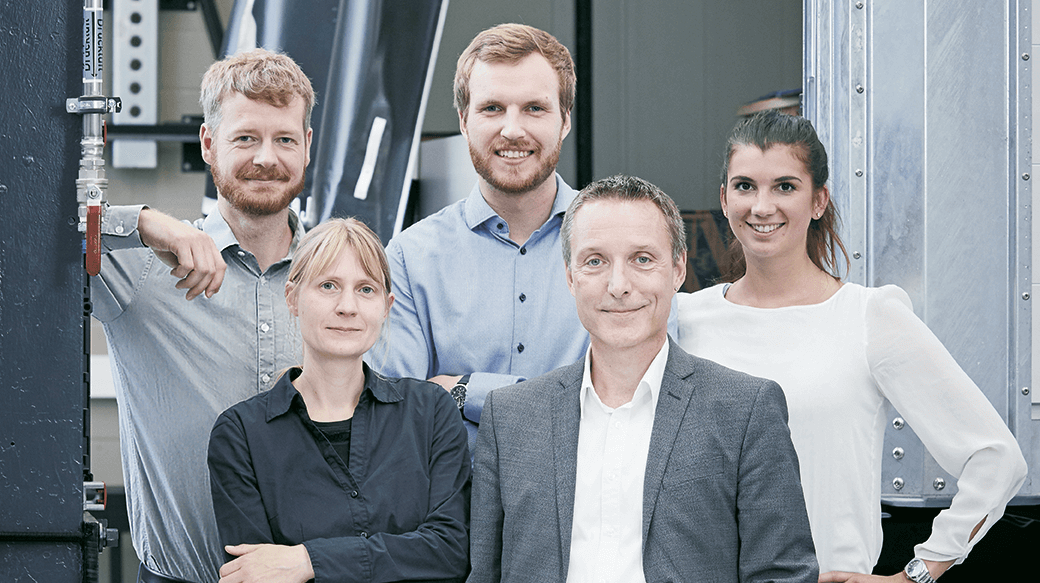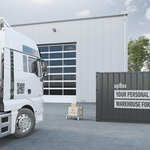iGurt
PULLING THE RIGHT STRINGS
BPW USES ITS PERSONAL NETWORKS WITH TRANSPORT AND LOGISTICS COMPANIES TO DEVELOP NEW IDEAS TO COMMERCIAL VIABILITY. CO-INNOVATION ALSO RESULTED IN THE iGURT LOAD SECURING SYSTEM, WHICH IS NOW RECEIVING ITS FINISHING TOUCHES IN PRE-PRODUCTION TESTS AT RENOWNED HAULIERS.
DB SCHENKER, BLG LOGISTICS, BERMEL, EMONS, SCHÄFER ...
If you were to write down the names of the hauliers that contributed to the development of the iGurt, the result would be a long list – and almost a who’s who of the transport and logistics industry: dispatchers, drivers, warehouse staff, but also designers, management consultants, insurers, the police and even Germany’s Federal Motor Transport Authority participated in workshops, interviews and countless practical tests to turn the idea of a student and his supervisor Dr Jan-Philipp Kobler into a market-ready – and already award-winning – product.
A good two years ago, Christopher Lamers (28) of BPW’s Mechatronics team began giving some thought to the lashing straps that are used to secure the transported goods in a truck’s cargo area. These straps are usually tightened by the driver with a ratchet – but how tight is purely a matter of how tight it feels to them personally. This is why the straps are often too loose, occasionally too tight or sometimes not even tightened at all. The result: the load suffers damage, begins to slide around and can even cause the trailer to tip over.
BPW’s iGurt received the 2019 iF DESIGN AWARD in the Professional Concept discipline’s Safety category.
As a student at RWTH Aachen University, Lamers’ master’s thesis was devoted to the lashing strap: his idea was to use a handheld sensor to measure and display the correct tension of the straps, as well as to monitor and document it while driving. To this end, he presented a prototype that he designed together with the BPW training workshop – a clunky device that housed the electronics and display unit in a steel U-profile. Nevertheless, the idea of measuring and displaying the tension on a tablet immediately impressed Head of Development Dr Markus Kliffken – and he hired Christopher Lamers as a development engineer at BPW. After that, the team got down to work – electronics developer Dr Adrian Klein gave the prototype a professional circuit board and intelligent software, software developer Celina Renner programmed an intuitive app for it. In rapid design iteration stages, the housing was reduced to the size of a pack of cigarettes so that it would fit ergonomically under the ratchet lever. The 3D printer from BPW’s tool manufacturing department, which even uses carbon fibres to produce a torsion-resistant, fully functional housing, proved to be a great help.
The idea was reviewed and refined in countless in-depth interviews and workshops with freight forwarders, drivers and industry experts. “Many companies claim that their focus is on the customer,” says Christopher Lamers, “but at BPW, it plays a central role as early as during product development.” One of the most exciting questions during the development phase was whether the drivers would understand and accept the system.
“In tests with DB Schenker, Spedition Bermel and DLG Logistik, the drivers were genuinely impressed and proudly demonstrated the iGurt to other drivers at motorway service areas.”
Christopher Lamers
A HARBINGER OF AUTONOMOUS TRANSPORT?
It became crystal clear that BPW had truly hit a nerve with the iGurt when the concept premiered at the IAA Commercial Vehicles in Hanover in September 2018: “The interest was overwhelming,” recalls product manager Katharina Kermelk, “and the feedback provided us with a wealth of new ideas and suggestions – even from the police and the German Federal Motor Transport Authority. The iGurt could considerably simplify load securing checks by the police, for example. It is conceivable that trucks equipped with the iGurt could be inspected and waved through remotely. The iGurt also attracted a great deal of interest from research institutions and innovation laboratories in the vehicle and insurance sectors that are working on the autonomous transport system of the future.”
After a series of tests with the forwarders Emons and Brucherseifer, the system will go into pilot production during the summer of 2019. Five hauliers will send a total of 600 devices off on their journeys. The iGurt will then be ready for its official market launch in 2020. Numerous hauliers and their drivers, who participated in the early tests, are already eagerly awaiting its release.
“The iGurt is just one example of how we aren’t only expanding what already exists – we can also provide new benefits for transport and logistics. We have a lot of aces up our sleeve for the future.”
Dr. Markus Kliffken

The German Insurance Association (GDV) settles transport damages totalling 1.2 billion euros every year. The majority of cases are due to loads being inadequately secured or even not secured at all. Regulatory bodies report that more than 70% of the vehicles inspected are not secured properly. This results in substantial fines with costly and time-consuming follow-up securing and reloading activities, as well as high insurance costs – insufficiently secured loads are the cause of an estimated 20 to 25% of road accidents involving heavy goods vehicles.




